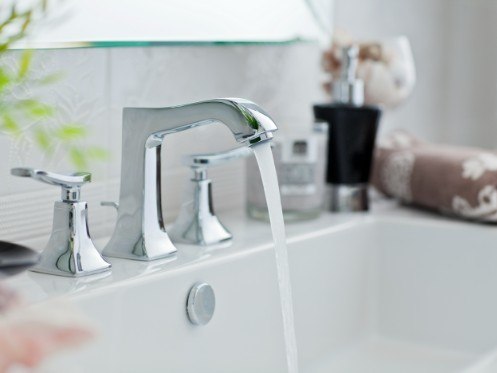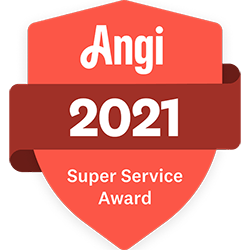The home and business environment is changing as eco-friendly moves continue to increase. Many people are looking to minimize their carbon footprint and environmental impact. The plumbing system is often overlooked and is an excellent candidate for green upgrades. Water-saving fixtures, materials from waste sources, and efficiency standards will soon be sweeping the marketplace moving through 2024 and beyond.
1. Water-Saving Technologies
Water-saving technology is one rapidly developing eco-friendly plumbing solution that will take off in 2024. These technologies are developed to reduce excessive water consumption within a home or business, thus reducing its adverse effects on the environment. With the market for environmentally friendly living expanding rapidly, it is little wonder that plumbers are offering more water-saving products.
Both households and businesses can reduce water consumption thanks to technologies such as low-flow toilets, showerheads, and rainwater harvesting systems. Such systems use rainwater for non-drinking applications and surplus water from sinks, showers, or laundries to irrigate lawns, gardens, or even flush toilets. You can consult plumbing experts to find out the water-saving ideas that suit your home.
2. Solar-Powered Water Heaters
Solar-powered water heaters use the sun’s energy to heat water, reducing the consumption of nonrenewable types of resources. Heating water is a significant source of energy consumption and demands the use of fossil fuels or electricity. Using solar power to heat your water can save on your utility bills and reduce your carbon footprint.
The principle behind a solar water heater system is straightforward. The collector panel is placed on the roof of a home or building and absorbs sunlight, which becomes heat. The heat is then collected and transferred to a tank, which heats water for showering and cleaning. Some systems employ a pump to move the water from the collector into the tank. In others, water is naturally circulated using the thermosiphon principle without requiring a pump.
Solar water heaters are durable and low in upkeep. Given proper maintenance, solar water heaters last longer when compared to the traditional models. In addition, systems without a pump have no moving parts to wear out or break down; they are virtually maintenance-free beyond the occasional cleaning.
3. Smart Plumbing Systems
Smart plumbing systems are designed to be simple and user-friendly. They allow consumers to save water and energy.
One of the defining features of smart plumbing systems is the monitoring of leaks and water waste. To achieve this, pipes and plumbing fixtures are fitted with sensors. Sensors detect the most minor leaks or drips so that homeowners and business owners can correct these problems before they become more severe threats.
A water management system is a necessary feature of smart plumbing systems. Such systems can monitor water-use patterns and control the flow of water in line with them. If, for instance, the owner of a home or business is using more water than usual, then flow will be limited to save water.
You can even set up a smart plumbing system to cut off the water supply when it isn’t needed. For example, you can program it to shut off water flow at night. This type of system will not only save a lot of water and energy but also lower homeowners’ and business people’s utility bills.
In addition to these applications, smart plumbing systems are compatible with other technologies. You can turn on or shut off your plumbing system from afar with a smartphone. In addition, you will be alerted if there is a leak and can adjust water flow from anywhere at any time.
4. Recycled Materials
Another plumbing trend to look out for is the use of recycled materials. In a circular economy, everything gets reused, reducing the burden on the planet’s resources. Instead of sending old pipes, fixtures, and other materials to landfills, they are processed and used to manufacture new products.
Plumbing components can be made from recycled metals such as copper and brass. These metals are very reusable. If they are melted down and re-molded, their useful properties are not compromised. With more plumbing manufacturers reusing metal, the amount of newly minted metals used in production will gradually lessen.
Another recycled material used for plumbing fixtures is glass. Not only is glass the world’s most easily recyclable material but once melted down, it can be reshaped over and over again without losing one ounce of its purity. Plumbing accessories like shower doors become a bit classier with recycled glass. They add a note of environmental fashion in any bathroom setting.
In addition to metals and glass, plastic is another reusable raw material in making plumbing fittings. Recycled plastic components avoid the environmental harm caused by the production of new plastics.
Besides environmental considerations, using recycled materials has other advantages for plumbing fixtures. Since recycled materials do not need to be processed and treated at the same level as new materials, they are naturally cheaper. It is eco-friendly plumbing made affordable and green for consumers.
5. Wastewater Treatment
Wastewater treatment is another of the hottest green developments in plumbing. Populations and cities are growing daily, and so is wastewater production. Any water that has already been used and then discharged, such as domestic sewage or industrial liquid waste, is wastewater.
In terms of treating the wastewater at your business, traditional methods are environmentally harmful and water-intensive. Eco-friendly plumbing solutions include some natural and sustainable ways of waste treatment. The most prevalent technique may be phytoremediation, which involves using plants to clean up wastewater.
In this process, plants of varying absorption capabilities are employed. The nutrients in wastewater feed the plants, which grow and develop into biomass. This biomass can be harvested for many purposes, including biofuels, animal fattening feeds, and even making consumer products like shoes.
Another environmentally friendly way to treat wastewater is with constructed wetlands. A constructed wetland is an artificially designed ecological environment similar to natural ones. They are used in several sequential processes of physical, chemical, and biological treatments to filter and purify water.
Wetlands contain plants that serve as natural filters, cleaning up the water. The wetlands are rich in microorganisms, which break down organic matter to produce concentrated nutrients suitable for plants. The water can be recycled for flushing toilets, watering crops, or even watering your business’s landscaping.
6. Green Drainage Systems
Green drainage systems are designed to support natural water cycles and prevent pollution and waste from flowing into the environment. Such systems collect and store rainwater, purifying it to make it suitable for reuse. In addition, they reduce the volume of water flowing into municipal sewage systems, thus avoiding spillover and reducing the demand on municipal wastewater treatment plants.
Rainwater harvesting is another facet of green drainage systems. Rainwater from roofs and parking lots is collected, filtered, and stored in tanks for later use. This gray water is suitable for flushing toilets, irrigating landscaping, and other miscellaneous uses. This water conservation system and reduced dependence on municipal systems greatly benefit areas with a low fresh water supply.
Contact the Professionals
At Thermo Direct, we are committed to staying on top of the latest eco-friendly plumbing trends and incorporating them into our services. Our expert team has over two decades of experience helping our Raleigh, NC customers get the most out of their living and working environments. We install, maintain, and repair heating and cooling systems. Additionally, we provide indoor air quality, plumbing, and electrical services. Contact Thermo Direct today to learn how we can help you save money while contributing to a healthier planet.









